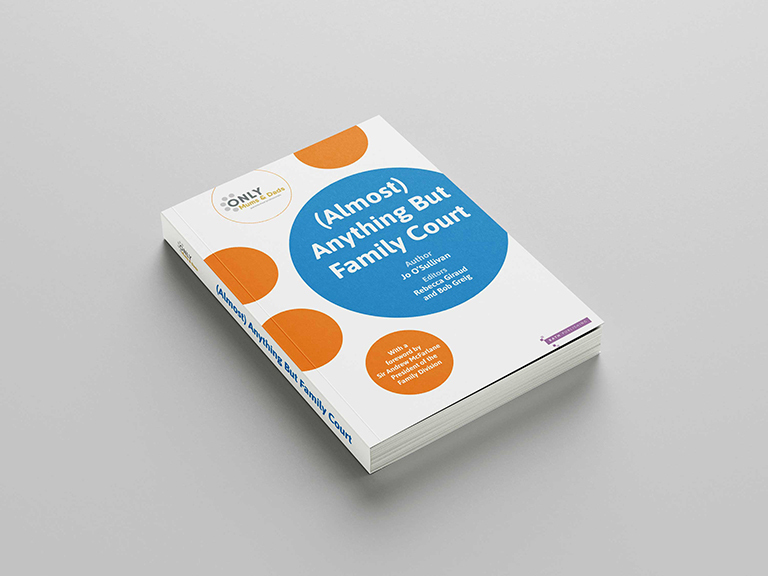The C1A form is a supplementary form filed with a C100 which is an application for a Child Arrangements Order. It can accompany any type of application for a Child Arrangements Order be it in relation to the time a child or children spend with each parent, a specific issue of health or religion or an application for a Prohibited Steps Order to prevent the temporary or permanent removal of a child or children from England & Wales for example. The C1A is designed to set out safeguarding concerns or issues, both in relation to you and/or the children, and which the court needs to be aware of when considering what orders to make.
What are safeguarding concerns?
Safeguarding concerns can be in relation to domestic violence or abuse, of any form, whether physical, mental, sexual, emotional or financial. This can be in relation to you and/or the child or children. It may relate to a third party who the child or children have regular contact with. The form allows you to set out all the relevant incidents, the duration, when they occurred and the help you have sought or trying to seek. The content of the form can include events in which a child may have heard or witnessed you or another relevant child being subjected to any form of domestic violence or abuse.
You must remember that when completing this form you are signing a Statement certifying that what you are saying is true.
It must be remembered that the form takes into account any risk of harm. Therefore it covers emotional harm as well as physical harm. If you feel you or the children are at a possible risk of either emotional or physical harm state this and the reasons why you think this to be true.
How does the C1A assist the court?
Before considering this please remember that when considering any type of application for a Child Arrangements Order, the court must always have regard to “The Welfare Checklist”. The check list deals with:
- The wishes and feelings of the relevant children;
- Physical, emotional and educational needs;
- Age, sex, background and/or any characteristics the court feel relevant;
- Any harm suffered or risk of harm to the child;
- The capability of each parent or other relevant person of meeting the needs of the child;
- The range of powers available to the court in such proceedings.
Your C1A should therefore be cross referenced to the Welfare Checklist. The C1A then assists the court with an overview of all and any safeguarding concerns. In turn, this enables the court to make the appropriate orders for case management and ensures the case is allocated to the appropriate level of Judge. The C1A will also provide the court with the information they need to consider when determining the child arrangements order.
The Do’s when completing a C1A form
- Read the guidance at the back of the form.
- Answer all relevant questions.
- Provide all details of the children including dates of birth.
- Give a brief description of the incidents including when they occurred, the duration and any help sought.
- Try to be as exact with the dates as possible.
- Read the different elements of the form carefully and ensure you are answering the question being asked as clear and as simple as you can.
- Ensure all claims are true.
- Provide any relevant case numbers of other proceedings you may have, for example an application for a non- molestation order.
- If you are not represented by a solicitor, make this clear.
- Think about what you are asking the court to do and what you would like them to do to safeguard your or the children.
- Link what you say to the Welfare Checklist.
- Attach any relevant orders.
- Proof read your form before filing it with the court.
- If you are a litigant in person send 3 copies to the court for them to be served upon all parties.
- Sign and date the form
- Make sure you pay the correct feeds and if eligible apply for the appropriate refunds.
- Keep a copy of the form for your records.
- If you are responding to the form, it is advised to go through each allegation and state whether these are denied or accepted.
The Don’ts when completing a C1A Form
- Do not exaggerate the claims being made by you.
- Ensure you do not defame the other party in the proceedings.
- Do not make false allegations of domestic violence.
- Do not give full detailed accounts of the allegations being made as there will be an appropriate time for this when you file witness statements later in the proceedings.
- Do not tell anyone who is not a party to the proceedings what is said in the C1A.These documents are confidential.
A Statement of Truth
You must remember that when completing this form you are signing a Statement certifying that what you are saying is true. Therefore everything said in the form must be in its truest form. Remember it is possible to mislead by omission. If the court finds that what you have said on your form is false, proceedings for contempt of court can be brought against you.
Additional Reading/Resources
If you face court alone many people have found Lucy Reed’s book, ‘Family Court Without A Lawyer’ particularly useful.
Some courts offer a free ‘Support Through Court’ service. Volunteers offer support and guidance before, during, and after court. They ensure that those facing court alone feel prepared and supported in accessing justice.
The Handover Book is a communication book for separated families. It allows both parents to always be aware of what is happening in their children’s lives as they go from one household to another.
If you want to read more about the emotional impact of separation and how to get yourself back on track Breaking Upwards is a good starting point.
Posted on October 23, 2019
















